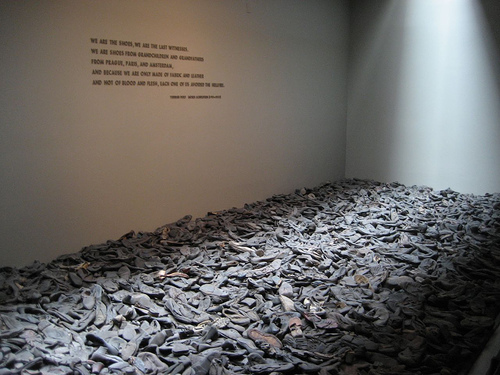From all the readings of this week, i find it interesting how strong resilient positivity felt towards museum and passionately making an experiential space which not only connects us to the past but also successfully hone on the emotional aspect.i always felt that museums are the bank of the history collection. I felt like they more towards inner shell of the building almost no connection to the structure and just an informative resource. Most of the musuems i visited was like a "box" as discussed by Lange's "what Should a Museum be?
Thinking of Daniel Libeskind's Jewish Museum and W.G. Sebald's Austerlitz i find it very exciting. As museums has gone through a period of change and redefining its role and functions. I felt like museums are perceived to have a societal role that is broader than just satisfying individual visitor. There is a goal towards the design of the building, which is serving its meaning, its context and phenomenology of its surrounding and a bubble of experiences in design. I find a strong architectural language in a building but going through the reading i find it to be blending with the interior space giving a memorial experience and making an emotional attachment the atrocities of the past. And leave an iconic image in my mind an amalgamation of art and architecture and other sensory experiences.

On the contrary, thinking of the Gehry's Guggenheium Museum in Bilbao, it is certainly true that architecture had more attention that the collection or representing the memory. I would say its just representing the dominant architecture that stands out from its surrounding making a style statement. With the fact of Gehry's way of designing in my mind i would like to argue how far his buildings are serving the society.
Coming back to the museums, after all of the readings the question which goes back and forth in my mind is: Architects giving s much thought and efforts to make the society aware of the past and giving an experience of reliving the history it is something related to fame, economy and ionic status?
Thinking of Daniel Libeskind's Jewish Museum and W.G. Sebald's Austerlitz i find it very exciting. As museums has gone through a period of change and redefining its role and functions. I felt like museums are perceived to have a societal role that is broader than just satisfying individual visitor. There is a goal towards the design of the building, which is serving its meaning, its context and phenomenology of its surrounding and a bubble of experiences in design. I find a strong architectural language in a building but going through the reading i find it to be blending with the interior space giving a memorial experience and making an emotional attachment the atrocities of the past. And leave an iconic image in my mind an amalgamation of art and architecture and other sensory experiences.

On the contrary, thinking of the Gehry's Guggenheium Museum in Bilbao, it is certainly true that architecture had more attention that the collection or representing the memory. I would say its just representing the dominant architecture that stands out from its surrounding making a style statement. With the fact of Gehry's way of designing in my mind i would like to argue how far his buildings are serving the society.
Coming back to the museums, after all of the readings the question which goes back and forth in my mind is: Architects giving s much thought and efforts to make the society aware of the past and giving an experience of reliving the history it is something related to fame, economy and ionic status?






